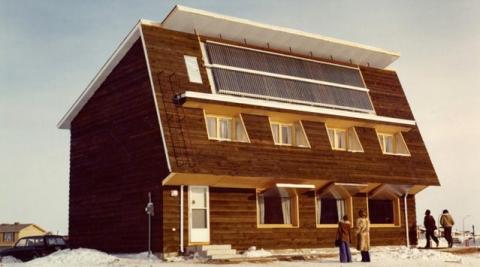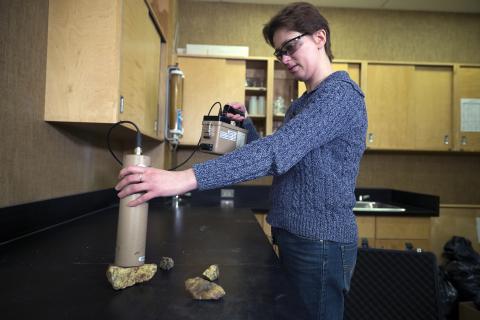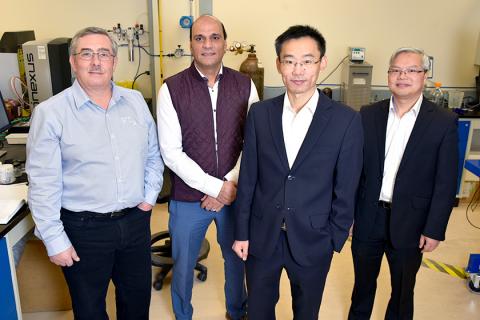Inside SRC
There are so many books on leadership and management that it's hard to sift through the pile to find the gems. Here is a diverse list of five books recommended that broaden the traditional notion of leadership.
Disruptive innovation and entrepreneurs are good friends. Entrepreneurs are often the ones that develop new products or services that change an entire industry. Learn what disruptive innovation is and when a technology might be considered disruptive - and when it isn't.
Uranium mining companies face a significant processing challenge unique to their industry: the core samples they drill and extract are radioactive. When radioactive material is cut, the dust becomes an issue. Learn how this problem was solved with a custom saw box.
Time to get out your library card or e-reader, SRC's President Emeritus Dr. Laurier Schramm shares his top five books about technological innovation for National Get Caught Reading Month.
The Saskatchewan Conservation House was a demonstration house built to test energy-efficient methods. Four more energy-efficient demonstration homes based on SRC’s research and expertise were later constructed. Learn about the innovative features of these homes that influenced energy-efficient housing across the world.
As a result of the energy crisis in the 1970s, Saskatchewan residents were looking for ways to reduce energy costs for their homes. Learn about the development of an energy conservation demonstration home, the Saskatchewan Conservation House, which applied cost-effective methods for reducing energy use for homeowners.
Making predictions about the future is difficult but, if the past is any indicator, some future technological innovations will arise out of things that have already been imagined by science-fiction and fantasy-fiction writers.
We’re fortunate that many women in STEM careers have chosen to work here – scientists, engineers, researchers, technologists. Learn how five women at SRC came to be in a STEM career and what and who inspired them - and continues to inspire them - to stick with it.
Since the early 20th century, Canada's research and technology organizations have been interested in learning how to measure the economic impacts of their work. Find out how SRC's R&D impact assessment tool works.
Research programs that foster collaboration between industry and academia are an effective way to support industrial and social innovation. Learn about a recent mentorship that led to a ground-breaking discovery for the oil and gas industry.










